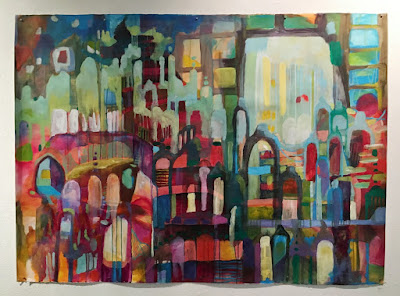Untitled
Jeremy Alba exhibited his work last week (3/06-3/10) at the Witt. Titled Convergence, the work made great use of the space. There were wall-mounted pieces, a large scale installation (above), and work on pedestals. Considering the variety of the work, Alba was successful in uniting everything under his obvious interest in sharp, geometric forms.
Untitled
Though it's easy to get lost in such a large and sleek installation such as the one in the first image, I was equally drawn to the rest of the work. The smaller pieces are interesting and it's from them that I feel they're an origin point for the rest of the work. At the area where they rest against their support, they feel soft. It's as if the angular structures they start to take on is their attempt at reaching out to see what else exists in the world; a sort of growth through knowledge.
Untitled
Untitled
Pictured above are two of three pieces he also exhibited that are similar in their almost painting-format and installation. The mostly triangular shapes that form the entire piece seem like a jigsaw puzzle before it's come apart. Though I like the contrast in the wood grain and size of each shape resting against each other, the work didn't hold my attention for long.
Untitled
My favorite piece in the gallery is the one posted above. It's hard to tell whether the bottom part is meant to be a pedestal that flows into the work or if it's an essential part of the piece, but I really like it. The manner in which the top, dark, geometric form and the bottom, white shape, sandwiches the the twisting, organic form really drew my interest. The top and bottom parts also feel like they're in stasis while the center part appears to be in motion, endlessly coiling upon itself.
I enjoyed Alba's show. I think he found a successful way to exhibit his work in a very challenging space.
Photo by Polo Lopez










